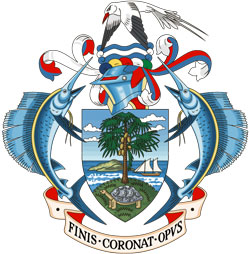The last update in January 2022, Seychelles is a small island nation located in the Indian Ocean, northeast of Madagascar and about 1,600 kilometers (994 miles) east of mainland Africa. Here more details about the Seychellois economy:
- Economy:
- Seychelles has a relatively small but diverse economy, with key sectors including tourism, fishing, agriculture, and offshore financial services.
- Tourism is the main driver of economic growth and foreign exchange earnings in Seychelles. The country is renowned for its pristine beaches, crystal-clear waters, and unique biodiversity, attracting tourists from around the world.
- Fishing is another important sector, with Seychelles being one of the world’s largest tuna fishing grounds. The fishing industry contributes significantly to the country’s export earnings and food security.
- Agriculture, although less prominent than tourism and fishing, plays a role in Seychelles’ economy, particularly in the production of spices, fruits, and vegetables for domestic consumption.
- Seychelles has also developed a niche in offshore financial services, including offshore banking, insurance, and company registration. The sector contributes to the country’s financial services industry and foreign investment inflows.
- Gross Domestic Product (GDP):
- Seychelles has a nominal GDP of around USD 1.6 to 1.7 billion.
- The GDP per capita is approximately USD 15,000 to USD 16,000.
- GDP Growth Rate:
- Seychelles has experienced moderate GDP growth in recent years, averaging around 3% to 4% annually.
- Employment:
- The unemployment rate in Seychelles is relatively low, typically around 3% to 5%.
- The tourism sector is the largest employer, followed by fisheries and other service industries.
- Tourism:
- Tourism is the main contributor to Seychelles’ economy, accounting for a significant portion of GDP.
- The country attracts around 350,000 to 400,000 tourists annually.
- Tourism-related activities contribute to over 25% of total employment.
- Fisheries:
- Seychelles has a thriving fisheries sector, with tuna being the primary export.
- The country’s Exclusive Economic Zone (EEZ) is one of the largest in the world, providing ample fishing grounds.
- Fisheries contribute significantly to export earnings and government revenue.
- Foreign Direct Investment (FDI):
- Seychelles attracts foreign investment, particularly in the tourism and financial services sectors.
- FDI inflows vary but have been increasing steadily over the years.
- Inflation:
- Inflation in Seychelles is relatively low and stable, typically ranging from 1% to 3% annually.
- The government implements monetary policies to manage inflation and stabilize prices.
- Government Revenue and Expenditure:
- The government of Seychelles generates revenue from taxes, tourism-related activities, and other sources.
- Government expenditure focuses on infrastructure development, education, healthcare, and social welfare programs.
- Debt:
- Seychelles has managed to reduce its external debt in recent years through debt restructuring and prudent fiscal management.
- The country’s debt-to-GDP ratio is around 60% to 65%.
- Exchange Rate:
- The Seychellois rupee (SCR) is the official currency of Seychelles.
- The exchange rate fluctuates but is typically around 13 to 14 SCR per USD.
These figures provide an overview of Seychelles’ economy in terms of its size, growth, key sectors, employment, and economic indicators. It’s important to note that economic data can vary from year to year and may be subject to revisions based on updated information and economic conditions. For the most current and accurate data, it’s recommended to refer to official sources such as the Seychelles National Bureau of Statistics or international organizations like the World Bank and the International Monetary Fund.

